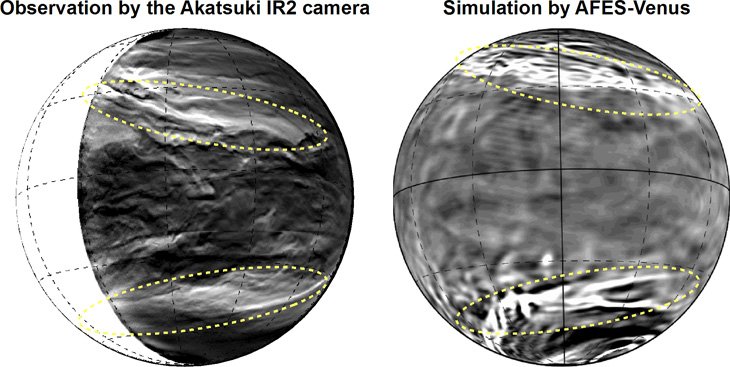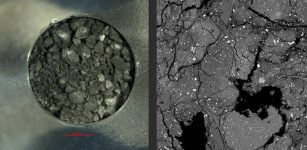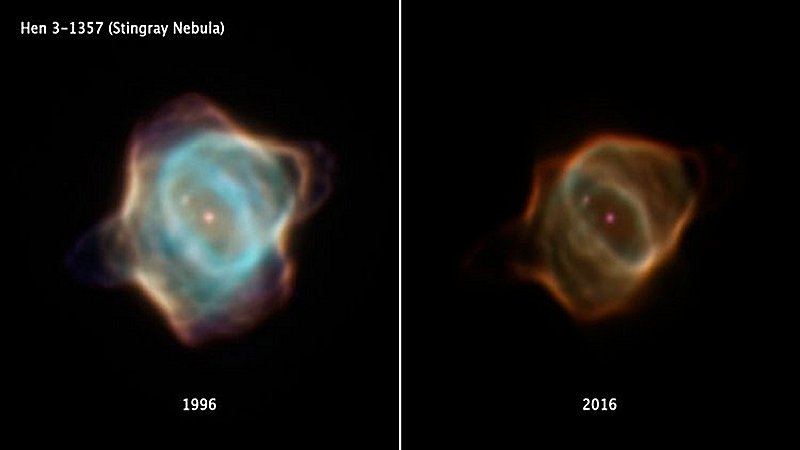Giant Y-Shaped Structure Discovered In The Clouds Of Planet Venus
MessageToEagle.com – “At the cloud top level around 65?km height, a global Y-shaped structure was observed in the ultraviolet region and a large bow-shaped structure was discovered in the mid-infrared region,” researchers from Kobe University, Japan report in their paper.
A Japanese research group led by Project Assistant Professor Hiroki Kashimura (Kobe University, Graduate School of Science) has identified a giant streak structure among the clouds covering planet Venus based on observation from the spacecraft Akatsuki.
Using large scale climate simulation, the researchers also revealed the origin of the structure.

Venus is often called Earth’s twin because of their similar size and gravity, but the climate on Venus is very different. Venus rotates in the opposite direction to Earth, and a lot more slowly (about one rotation for 243 Earth days). Meanwhile, about 60 km above Venus’ surface a speedy east wind circles the planet in about 4 Earth days (at 360 km/h), a phenomenon known as atmospheric superrotation.
The sky of Venus is fully covered by thick clouds of sulfuric acid that are located at a height of 45-70 km, making it hard to observe the planet’s surface from Earth-based telescopes and orbiters circling Venus. Surface temperatures reach a scorching 460 degrees Celsius, a harsh environment for any observations by entry probes. Due to these conditions, there are still many unknowns regarding Venus’ atmospheric phenomena.
To solve the puzzle of Venus’ atmosphere, the Japanese spacecraft Akatsuki began its orbit of Venus in December 2015. One of the observational instruments of Akatsuki is an infrared camera “IR2” that measures wavelengths of 2 µm (0.002 mm) and can capture
This camera can capture detailed cloud morphology of the lower cloud levels, about 50 km from the surface.
Before the Akatsuki mission began, the researchers developed a program called AFES-Venus for calculating simulations of Venus’ atmosphere. AFES-Venus reproduced super rotational winds and polar temperature structures of the Venus atmosphere.
Using the Earth Simulator, a supercomputer system provided by the Japan Agency for Marine-Earth Science and Technology (JAMSTEC), the research team created numerical simulations at a high spatial resolution. Using the AFES-Venus high-resolution simulations, the team reconstructed the pattern (Figure 1 right-hand side).
The similarity between this structure and the camera observations prove the accuracy of the AFES-Venus simulations. The origin of the giant streak structure can be explained by a phenomenon closely connected to Earth’s everyday weather: polar jet streams. The simulations suggest this streak structure is formed from two types of atmospheric fluctuations (waves), baroclinic instability and jet streams. The successful simulation of the planetary-scale streak structure formed from multiple atmospheric phenomena is evidence for the accuracy of the simulations for individual phenomena calculated in this process.
Until now, studies of Venus’ climate have mainly focused on average calculations from east to west.
This finding has raised the study of Venus’ climate to a new level in which discussion of the detailed three-dimensional structure of Venus is possible.
The next step, through collaboration with Akatsuki and AFES-Venus, is to solve the puzzle of the climate of Earth’s twin Venus, veiled in the thick cloud of sulfuric acid.
MessageToEagle.com










